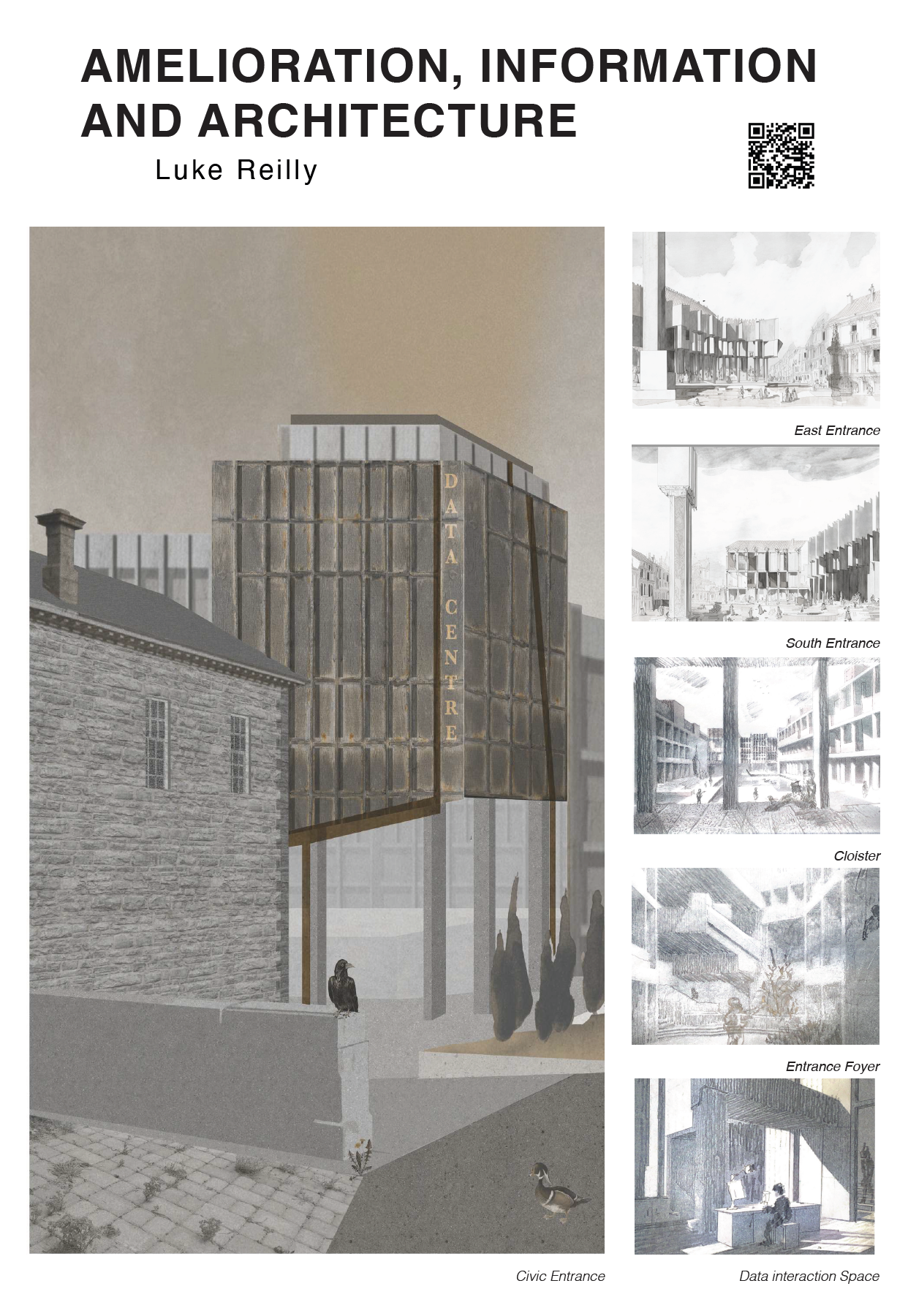This thesis investigates how consequential buildings such as data centres are an aftereffect of our overuse of energy and dependence on information storage.
I would like to question our intense interactions with the land, our production of data, our remaining balance of energy and our obsession with growth. We live among anti-human structures that are an invisible extension of our modern lifestyle; an integral infrastructure of the present-day future. Steel-clad objects are a by-product of our interdependence on information, data and the cloud.
Our dependence on data centres has created an over-reliance on energy and water for the upkeep of these organisms’ vitals. As autonomous structures; their use of resources as commodities are verging on becoming a privilege. The buildings are that of storage, a space without windows, a place without feeling, a room without inhabitants. Four walls partition all information about us; yet this space is not for you or me. Can our understanding of data centres be rearranged and dismantled as easily as they could be taken apart?
The data centre can be a place for the people; as an educational space that ensures understanding of our future. We can urge for degrowth and retain our architectural esteem through delicate interaction with the land and form buildings for people, with care and consideration for the present. An energy monastery.
The locus of this thesis is the basin of the River Shannon, but not confined to its floodplains. The river holds more influence than just what it touches currently. Using this body of water almost as a metaphor for the development of the systems which are now essential to us. The river Shannon is ever-present but human interaction is forever re-arranging around her, from ecclesiastic settlements to Bord na Móna power stations.
Sometimes it is a slight reconfiguration which leads to the biggest impacts on the system to which we plug-in to.
